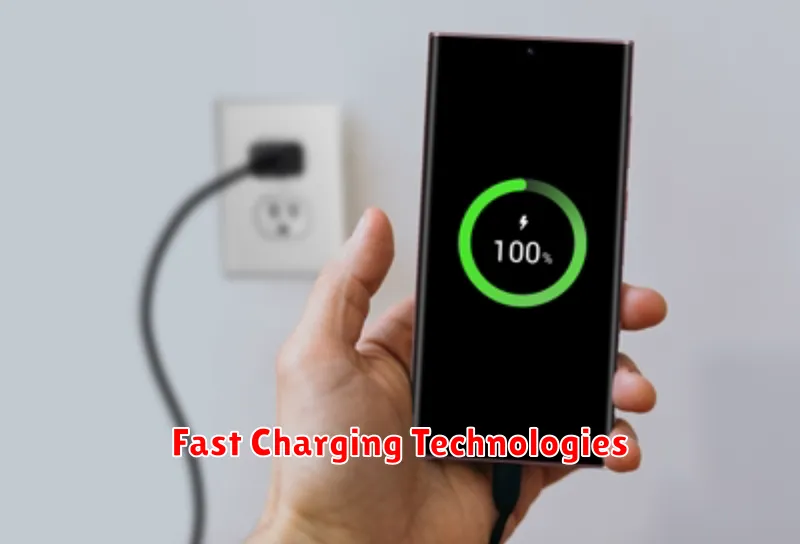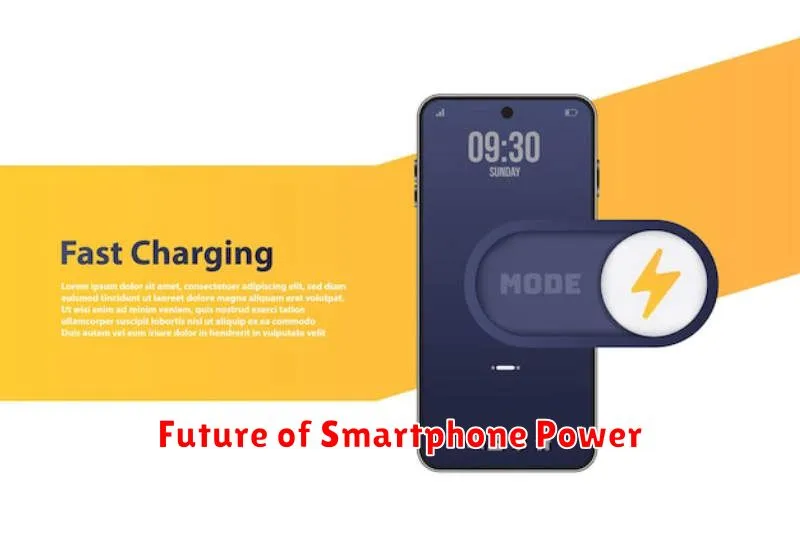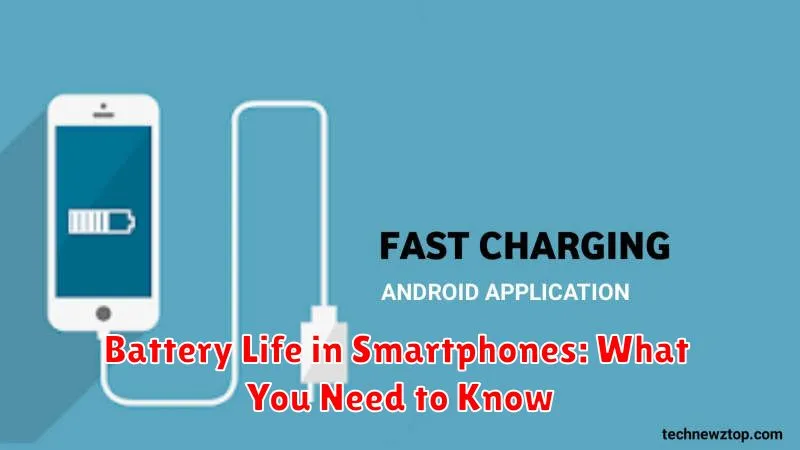Battery life is a crucial factor for smartphone users. Choosing a phone with long-lasting battery life can significantly impact your daily usage, eliminating the need for frequent charging and ensuring you stay connected throughout the day. Understanding the factors affecting battery life, such as screen brightness, app usage, and battery health, empowers you to make informed decisions when purchasing a new device or optimizing your existing smartphone’s battery performance. This article will delve into the key aspects of smartphone battery life, providing you with essential knowledge to maximize your phone’s uptime.
From understanding battery capacity and different battery technologies to practical tips for extending battery life, we’ll cover everything you need to know. Whether you’re a heavy user or simply looking to get the most out of your smartphone’s battery, this guide will offer valuable insights into battery management and help you choose a device that aligns with your power needs. We’ll explore the impact of operating systems, background processes, and even environmental factors on your smartphone’s battery life, providing a comprehensive overview of this essential aspect of mobile technology.
Understanding Battery Capacity (mAh)
One of the most important specifications of a smartphone battery is its capacity, measured in milliampere-hours (mAh). mAh represents the amount of electric charge the battery can store. A higher mAh rating generally indicates a larger battery capacity and, therefore, potentially longer battery life.
Think of it like a fuel tank. A larger tank (higher mAh) can hold more fuel, allowing a car to travel further before needing a refill. Similarly, a higher mAh battery can power a phone for a longer duration before requiring a recharge. However, actual battery life is also affected by other factors like screen brightness, usage patterns, and software optimization.
How Usage Affects Battery Drain
Several factors significantly influence battery drain. Screen brightness is a major contributor. Higher brightness consumes more power. Similarly, resource-intensive applications, such as gaming or video streaming, demand substantial energy.
Network connectivity also plays a role. Actively using data, particularly 5G, drains the battery faster than Wi-Fi. Furthermore, background processes, including app updates and location services, continuously utilize power, even when the phone appears idle.
Fast Charging Technologies

Fast charging technologies have become a crucial feature in modern smartphones, allowing users to quickly replenish their battery. These technologies utilize higher voltages and currents than standard charging, significantly reducing the time required for a full charge. Power delivery specifications are crucial to understand as they dictate the charging speeds.
Different manufacturers have developed their proprietary fast charging protocols, often branded with unique names. While these technologies vary in their specific implementations, the underlying principle remains the same: delivering more power to the battery in a controlled and safe manner. Understanding these differences can help users optimize charging times and potentially prolong battery lifespan.
Wireless Charging: Pros and Cons
Wireless charging offers convenience, allowing you to simply place your phone on a charging pad. It eliminates the wear and tear on your charging port, potentially extending its lifespan. However, it’s generally slower than wired charging, which can be inconvenient when you need a quick power boost.
Another downside is cost. Wireless chargers often require a separate purchase, and they can be more expensive than standard wired chargers. Additionally, wireless charging can generate more heat than wired charging, potentially impacting battery health over the long term. Efficiency is also a concern, as wireless charging can lose more power during the transfer process than wired charging.
Battery Health and Lifespan
Battery health refers to the battery’s ability to hold a charge compared to its original capacity. Over time, a battery’s health naturally degrades, leading to reduced usage time between charges.
Several factors influence battery lifespan. High temperatures can accelerate degradation, while extreme cold can temporarily reduce performance. The number of charge cycles also plays a significant role. A charge cycle is a full discharge and recharge, though this doesn’t necessarily mean from 0% to 100%. For example, draining from 100% to 50% and then recharging to 100% constitutes half a charge cycle.
Modern smartphones incorporate battery management features to optimize performance and longevity. These features might include optimized charging algorithms and warnings about extreme temperatures.
Tips to Extend Battery Life
Managing your smartphone’s battery life effectively can significantly improve your user experience. Here are several key strategies to maximize your battery’s longevity.
Optimize Display Settings
Reduce screen brightness. A dimmer screen consumes considerably less power. Also, consider shortening the screen timeout duration so your phone’s display turns off automatically after a shorter period of inactivity.
Manage Connectivity
Turn off Wi-Fi and Bluetooth when not in use. These features constantly search for networks, draining battery power. Limit the use of mobile data when possible, opting for Wi-Fi connections instead.
Control Background Activity
Close unused apps running in the background. These apps consume power even when not actively used. Restrict background data usage for non-essential apps in your phone’s settings.
Background Apps and Power Consumption
Background apps are applications that continue to run even when you’re not actively using them. While some background activity is essential for functionalities like receiving notifications or syncing data, many apps consume unnecessary power while running in the background.
This constant activity drains your battery, even if it seems minimal for individual apps. The cumulative effect of multiple apps running in the background can significantly impact your phone’s battery life.
Modern operating systems offer features to manage background app activity, allowing you to restrict certain apps from running in the background or limit their resource usage. This can lead to noticeable improvements in battery performance.
Impact of Software Updates on Battery
Software updates can have a significant impact on battery life, both positive and negative. Updates often include optimizations to improve power efficiency, addressing bugs that might drain the battery excessively.
Conversely, new features introduced in updates can sometimes increase power consumption. Adding more complex processes and functionalities may demand more from the hardware, leading to faster battery drain. This is particularly true for major operating system updates.
Immediately following an update, it’s common to experience temporarily reduced battery life. This is often due to background processes like re-indexing and optimization occurring after the update is installed. This typically stabilizes within a few days.
Battery Optimization Features
Modern smartphones incorporate various battery optimization features designed to extend usage time. These features often work automatically in the background, but understanding them can help users maximize their device’s battery life. Power saving modes are a common example, often allowing customization of which functions are restricted to conserve power.
Adaptive brightness automatically adjusts screen brightness based on ambient light conditions, significantly impacting battery consumption. Background app restriction limits the activity of apps running in the background, preventing unnecessary battery drain. Some devices offer battery usage statistics, allowing users to identify power-hungry apps and adjust their usage accordingly.
Future of Smartphone Power

The future of smartphone power is focused on delivering longer lasting, faster charging batteries. Solid-state batteries are a promising development, offering potentially higher energy density and improved safety compared to current lithium-ion technology.
Beyond battery chemistry, advancements in power management software and hardware are crucial. Artificial intelligence is being implemented to optimize power consumption based on user behavior. Improvements in charging technology, like faster wireless charging and optimized charging algorithms, also contribute to a better user experience.
While challenges remain, the ongoing research and development efforts suggest a future where smartphones can last significantly longer on a single charge and recharge much more quickly.

